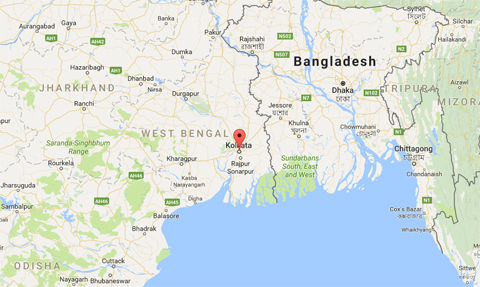KOLKATA: A sex workers' committee meeting is underway on the first floor of a shabby building at the entrance of Sonagachi, South Asia's largest red light district in the Indian city of Kolkata. The proceedings are brisk. A detailed form, complete with family history, address, educational qualifications and previous employment, is completed and the "new girl in town" is escorted to a nearby clinic for an x-ray to analyze her bones and establish her age.
"She has to be over 18 to even think of working here," said Gita Ghosh, a member of the sex workers' self regulatory board, reading from the rule book.
"And we have to be certain there was no coercion or force. If any of these are suspected, we will send her right back home." Ghosh is a new member of this self-help board, the first to be set up a decade ago in Sonagachi to stop the trafficking of girls from Nepal, Bangladesh and rural pockets of the East Indian state of West Bengal.
Started in 2007 by non-profit group Durbar Mahila Samanwaya Committee, there are now 33 such boards across the state today. Their efforts to screen girls new to sex work has led to the detection of thousands of trafficked girls and women. Between 1992 and 2011 the proportion of minors in sex work in Sonagachi declined from 25 to two percent, campaigners say. "It will be very difficult to find a minor or an unwilling sex worker in Sonagachi or any other red light area in the state today," said police officer Sarbari Bhattacharya, head of the anti-trafficking unit in Kolkata. "Girls are being trafficked but not to the brothels under the watch of sex workers. Our operations have now moved to residential areas and hotels."
Brothel patrol
Campaigners estimate there are between three and nine million victims of sex trafficking in India, adding that many do not come forward for fear of being ostracized by society, abused by their traffickers or not taken seriously by the police. Many victims, often from poor backgrounds, are duped with the promise of a job before being sold into the sex trade.
"I was brought here as a teenager with the promise of a housemaid's job," board member Mamta Nandi told the Thomson Reuters Foundation. "I can spot a reluctant entrant in these bylanes. I know what it feels like to be trapped here. No one talked to me when I was brought here against my will but I talk to people to make sure a 14-year-old is not exploited here." Ghosh and Nandi are also part of vigilante groups that live and work in the brothels. Their patrols take place around the clock, with each member responsible for visits to a dozen or so brothels operating from multi-storeyed buildings every day to identify new girls.
Life in Sonagachi
On a bright winter morning in January, some women of Sonagachi sit on the steps of their brothels, sunning themselves. Inside the damp corridors, utensils are being cleaned, heaps of clothes are washed and food cooked. This is when Ghosh and Nandi have friendly chats with the brothel madams. There are quick exchange of jokes, gossip shared and as they leave, the vigilante group members remind them to send new girls to be checked by the board.
As the sun sets, the streets come to life. There is no time to talk now, as women darken their lipsticks and dress up for their first clients - groups of college boys, migrant workers, the odd businessman or an out- of-place gentleman in a tie. The women on patrol change tack now, and walk along the narrow alleys quietly, keeping an eye out for newcomers, stopping only for a quick word with pimps to ensure they are following the rules of Sonagachi.
Up to 35 new girls come into Sonagachi every month, according to the regulatory board's data. Each girl is kept in a short-stay home for three days until her credentials and reasons for being in the brothel are verified. X-rays of her wrist, elbow and pelvis are taken to estimate her age, Ghosh said, adding that many carried forged documents to show they were 18 or older. "This model of anti-trafficking has shown results which we can measure now, a decade after it was started," said Smarajit Jana, advisor to the All India Network of Sex Workers told the Thomson Reuters Foundation. "Board interventions have assisted almost three times as many women and girls than other anti-trafficking efforts combined."
Building trust
The success of the boards, made up of 10 members including a doctor, counselor and elected representative, resonates in India's southern city of Mysuru as well. Ashodaya Samithi, a collective of over 8,000 women, men and transgender sex workers, started self regulatory boards here despite "mistrust and ridicule".
"Many questioned the intention of the sex workers, accusing them of being traffickers themselves," said Sushena Reza-Paul, an assistant professor and advisor to Ashodaya Samithi. "And in Mysuru, there is no defined red light district. So the boards use their extensive social network to identify trafficking victims." But board members say they still face challenges when they send young trafficked girls back home, with many parents refusing to accept them back. "We keep following up through our members," said Ghosh. "We keep trying and we know we are making a small difference." - Reuters











